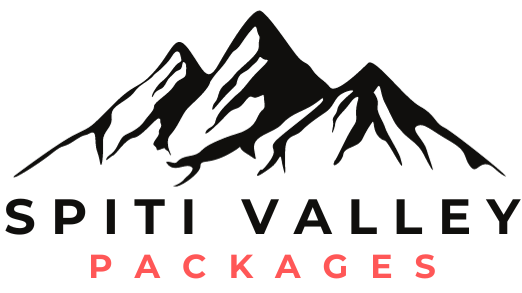Planning a trip to Spiti Valley is exciting — however, many first-time travelers are rightly worried about altitude sickness.
The air thins out significantly between 10000 and 14000 feet and while your body does adapt, it takes time. But, with a little bit of smart planning, it is possible to enjoy Spiti fully, without turning your trip into an AMS (Acute Mountain Sickness) adventure.
Let’s break it down into what you need to know, in a simple format.
What is Altitude Sickness and Why It Happens in Spiti
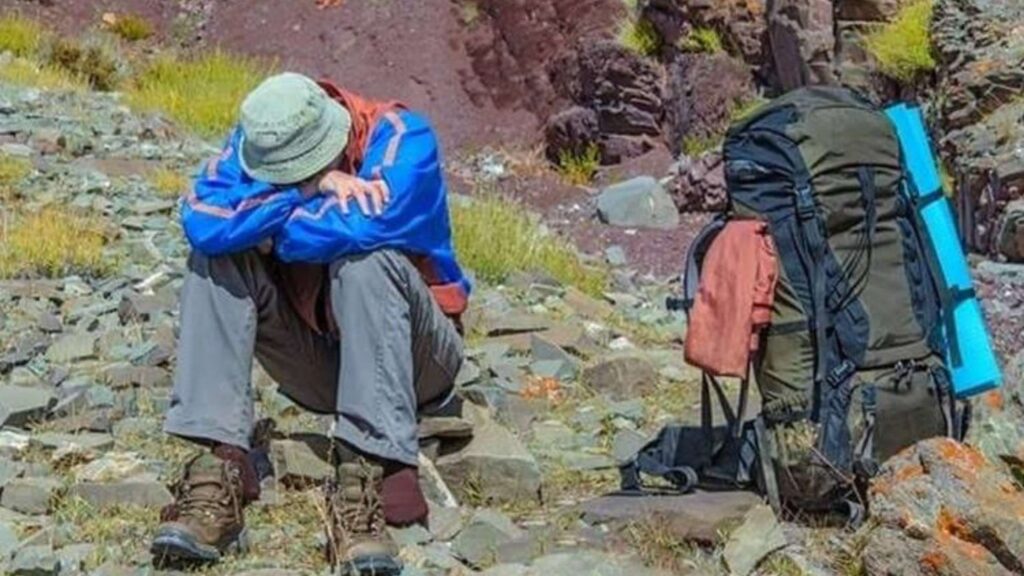
Altitude sickness, or AMS, is a condition your body experiences when it does not have enough oxygen available to it due to a quick ascent to an altitude.
Spiti Valley sits between 10000 ft – 14500 ft, meaning you will have much less oxygen than when you are travelling from Bangalore, Delhi or Mumbai.
Regardless of whether you are young, fit, or travel often, it is consistently possible to be affected by AMS if you go to high altitudes too quickly.
Usually AMS is experienced most by travelers who:
- Travel directly from Manali to Kaza
- Travel directly to Kaza without an overnight stopover in Kalpa or Tabo
- Don’t take sufficient rest before starting trekking
Luckily, it can all be prevented by making use of a little bit of planning.
Spiti’s Altitude Map – Where AMS Usually Hits
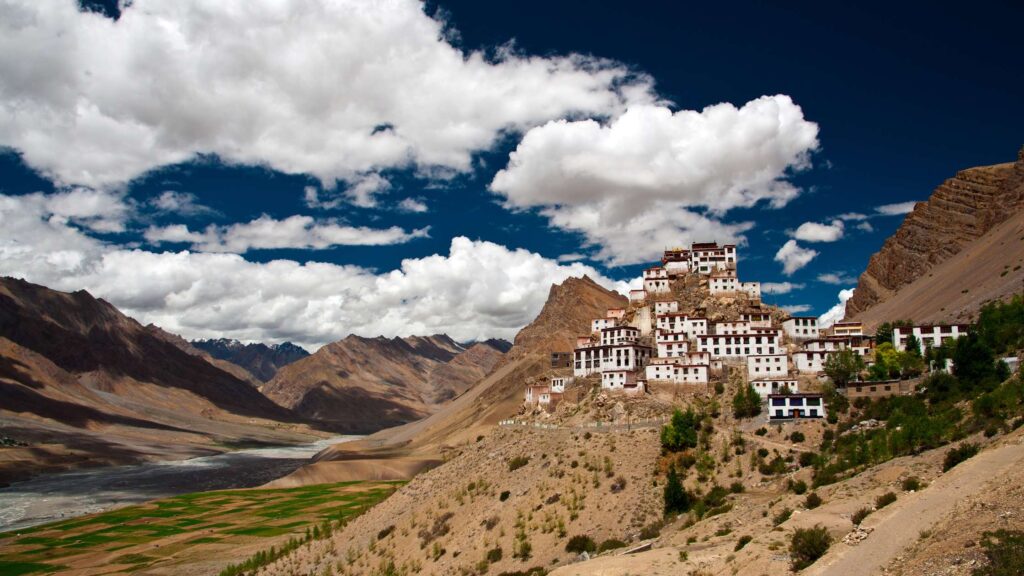
Understanding the altitude of each stop helps you plan your night halts better.
Here’s how the elevation looks across major stops:
- Narkanda: ~8,000 ft – great overnight stop for acclimatization
- Kalpa: ~9,700 ft – recommended Day 2 halt
- Tabo: ~10,500 ft – slow, safe gain before Kaza
- Kaza: ~12,500 ft – give your body time before sleeping here
- Langza, Hikkim, Komic: ~14,000+ ft – visit these after settling in Kaza
🔗 Read More: Kaza Travel Guide, Tabo Monastery and Stay Info, Spiti Itinerary 7–10 Days
Symptoms of Altitude Sickness You Shouldn’t Ignore

You may not notice AMS right away, but these signs are early warnings:
- Mild to severe headache
- Nausea or the urge to vomit
- Shortness of breath, even while resting
- Feeling dizzy or lightheaded
- Loss of appetite
- Trouble sleeping
- Feeling confused or disoriented (severe AMS)
Important: If symptoms worsen above Kaza, descend to a lower altitude (like Tabo or Kalpa) immediately and rest.
Which Route is Safer for Spiti – Shimla or Manali?
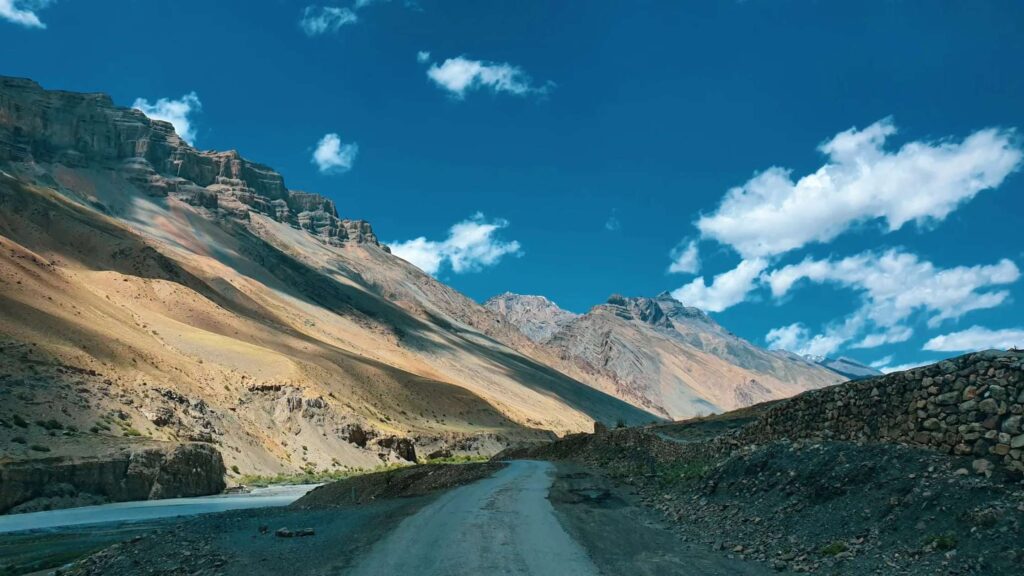
One of the main contributors to your likelihood of experiencing altitude sickness is the way you physically get to Spiti.
Let’s look at how the two main routes to Spiti differ — and why one is a better option for first-time and delicate travelers.
The Shimla Route (Delhi → Shimla → Kalpa → Tabo → Kaza)
- Gradual gain in altitude for over 2–3 days.
- You will be on the road long enough for your body to acclimatize before heading into high-altitude regions like Kaza.
- Roads leading to Kalpa are largely smooth and well-maintained.
- Ideal for senior travelers, families, and those new to mountain travel.
.
The Manali Route (Delhi → Manali → Atal Tunnel → Kunzum → Kaza)
- You will go from 6,000 ft to 12,500 ft in one day – a dangerous step.
- This leap suddenly increases your likelihood of AMS significantly.
- Roads between Gramphu and Kaza may be unstable, slushy, or difficult to navigate depending on the time of year for travel.
- Not recommended for altitude beginners.
Final Thoughts On Your Route Choice
If you are planning your first trip to Spiti, take the Shimla route, and plan for two nights at moderate elevation (Kalpa and Tabo).
The Manali road is beautiful – but best left for your return trip or future trip when you feel more comfortable with high-elevation travel.
10 Effective Ways to Prevent Altitude Sickness in Spiti

You do not need to feel afraid of high altitude – just be smart about it!
Follow these tried and tested tips to safeguard yourself and enjoy your travel to Spiti
1. Always enter from Shimla
Always take the Shimla Route into Spiti especially if it is your first time here. It allows your body to adjust gradually.
2. Don’t Sleep Above 10,000 ft on Day 1
Your first night halt should be 8,000 ft (Narkanda) or 9,700 ft (Kalpa). Kaza is not your first night stop. Do not sleep too high too soon.
3. Drink plenty of water
Drink 3–4 litres of water a day. Staying hydrated will improve oxygen circulation in your body and prevent headaches.
4. Avoid Alcohol & Smoking initially
In the first 2–3 days, stay away from alcohol and smoking. They will reduce your oxygen intake and worsen your acclimatization.
5. Walk Slow & Don’t Over-exert Yourself
If you’re hiking or going to explore a village or visit a monastery – just take it easy, don’t rush. Even a little over-exertion can possibly lead to shortness of breath.
6. Eat light, with lots of carbohydrates
Stay simple on food – dal, rice and bread. Avoid oily or spicy food – and if you’re thinking about consuming food that is heavy on the stomach, save it for lower altitudes or back home.
7. Consider a Night in Kalpa or Tabo – as a buffer
Consider a buffer night in Kalpa or Tabo so your body has time to adjust before sleeping at Kaza (~12,500 ft).
8. Avoid Visiting High Points Like Hikkim or Langza
On Day 1 in Kaza, do not visit Langza, Hikkim, or Komic. These points are over 14,000 ft and you may develop AMS.
9. See a Doctor if you have Pre-existing Conditions
If you are asthmatic, have blood pressure issues, diabetes, please consult your doctor before traveling.
10. Carry Prophylactic Medicines
Many people traveling to the high Himalayan regions carry Diamox (acetazolamide), garlic pills, or any number of natural or herbal remedies. But take medicines that are only recommended by your physician.
Should You Take Diamox? When & How to Use It

Diamox (Acetazolamide) is an effective and well used medicine to help prevent AMS, but may not be suitable for everybody. Here’s what you need to know.
What does Diamox do?
- It promotes a faster respiratory rate to rapidly adjust your body to an environment with lower oxygen levels.
- It is a preventive medicine, not a cure, so timing of the dosage should be taken into consideration.
When do you start taking Diamox?
- Ideally you should take 1 day prior to gaining elevation above 10,000 ft.
- This means that you would want to take it a minimum of 1 day prior to arriving in Kalpa or Tabo.
How much Diamox?
- Most travelers will be taking 125 mg to 250 mg, twice a day.
- Consult your doctor before taking Diamox. This is especially important if you have significant medical history.
Are There Side Effects?
- Tingling in fingers/toes
- Increased urination
- Slight drowsiness or nausea
- Don’t worry — these are common and usually temporary
Are There Natural Alternatives?
If you prefer not to use Diamox, some travellers swear by:
- Garlic soup or pills
- Clove and ginger tea
- Slow breathing exercises
- But again, none of these replace the importance of slow ascent and hydration
Who Is at Risk of AMS in Spiti Valley?
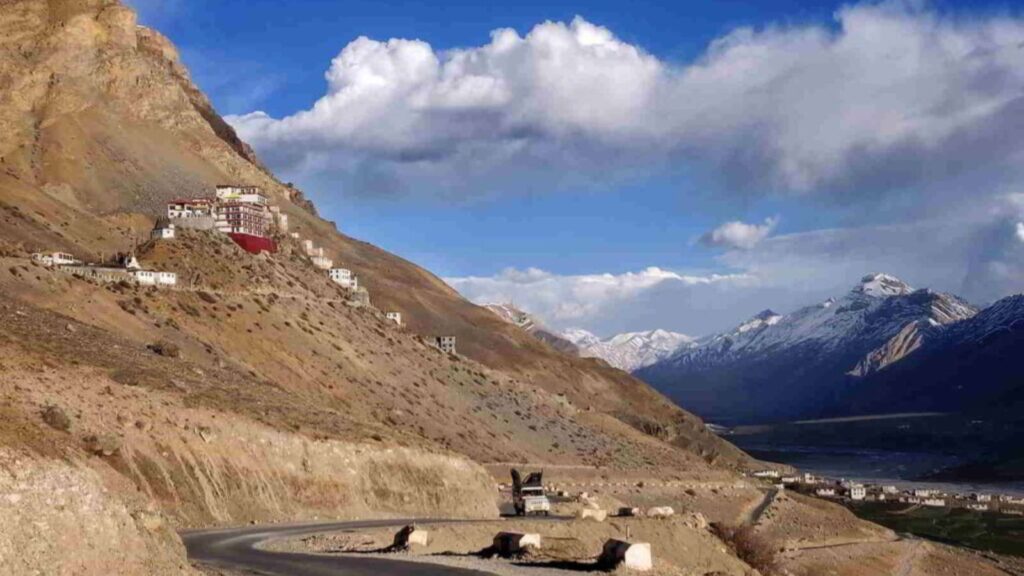
Altitude sickness does not only affect the unfit, those travelling at altitude for the first time can experience symptoms regardless of physical fitness.
However, things get a bit trickier with respect to altitude sickness and who is more susceptible.
1. First time travellers to high-altitude locations
If you generally live at an elevation that is less than 10,000 ft., your body may take a longer time to acclimatize and be aware and cautious.
2. People from coastal, flatland cities
For someone coming from cities like Bangalore, Chennai, Mumbai, or Kerala, the body needs more time to adjust to having lived at a very low altitude for so long .
3. People with existing health conditions
If you have health issues like asthma, high BP, heart related, or high blood sugar, speak to a family doctor before going. All of these health conditions are made worse when at altitude.
4. Children less than 5 years
Very young children below the age of 5 can not express when they feel discomfort. Given that, children should not travel to very high altitudes unless directed by the appropriate medical advice.
5. Solo traveller
If you have travelled to high-altitude locations alone, you will need to be diligent and conscientious with respect to monitoring your hydration and food intake, as well as rest. The symptoms of AMS can arise slowly and without significant early symptomology.
Packing Checklist to Avoid AMS Issues

When travelling to higher altitude locations for either short or longer durations, such as Kaza, Hikkim, or Chandratal, proper packing will impact your safety and comfort at altitude greatly.
If you have tested your body based on the above recommendations, here is a roofing checklist for all the essentials to support your body’s transition and to adapt.
Clothing & Cold Gear
- Thermals and a warm jacket (even in summer, nights are cold)
- Woollen gloves, socks, and a beanie
- Layered clothing (quick-dry tees, fleece)
Basic Medication & Health Essentials
- Diamox (only after doctor consult)
- Paracetamol for fever or headaches
- ORS or electrolyte sachets to stay hydrated
- Any personal prescription medicines (especially for BP or asthma)
- Pulse oximeter (optional, to monitor oxygen levels)
Snacks & Energy Boosters
- Energy bars and dry fruits
- Glucose or electrolyte drinks
- Chocolate or jaggery for quick energy
Other Must-Haves
- Lip balm, sunscreen, and moisturizer (air is dry)
- Refillable water bottle (3–4 litres a day recommended)
- ID proof and a small medical note if carrying prescription drugs
Packing for Spiti isn’t just about clothes — it’s about being prepared for altitude.
FAQs About Altitude Sickness in Spiti (2025 Edition)
Here are the most frequently asked questions travelers have regarding AMS in Spiti — simply answered.
Is Spiti Valley safe for asthma patients?
Yes, but not unless your asthma is controlled. Travel slowly, carry your inhaler, and consult with your doctor before traveling.
Can I get altitude sickness in Kaza?
Definitely. Kaza is greater than 12,000 ft, so if you arrive to quickly, (especially from Manali) then AMS is common.
How many days should I acclimatise in Spiti?
At least 2-3 days with gradual gains. Stay in Kalpa or Tabo long before advancing to places like Kaza, Hikkim, or Langza.
What is the best natural cure for AMS in Spiti?
Drink plenty of water, sip on garlic soup or ginger tea, and rest. In the first few days, don’t overdo it and avoid alcohol.
Should I avoid Chandratal if I have breathing issues?
Yes. The actual Chandratal is greater than 14,000 ft and oxygen is a lot thinner. It is best avoided by anyone with respiratory issues or cardiac concerns.
Also read: Shimla vs Manali Route to Spiti – Which Is Better for First-Time Travellers?
